Our visit to Taipei and Taiwan was spurred by a corporate meeting but we chose to come in a day early to see Taipei and stay a day afterwards to see a little of the island outside of its biggest city. We contacted Yolo Taiwan (https://www.yolo-taiwan.com) regarding tours and were pleasantly surprised by the driver/guide they offered to us, Alan. They scheduled both tours for us.
Our first tour was on a Sunday. We were met by Alan, who was both our driver and tour guide. There were four in our group and he was very responsive to all of us. Alan has a great personality for a tour guide. He is funny, accommodating and not unwilling to suggest we alter the schedule to avoid crowds and long lines.
Our first stop was to be Longshan Temple, the most famous on the Island. The first thing Alan suggested we visit a different temple. Dalongdong Baoan Temple 61 Ha-mi Street, Dalong District, Taipei City (www.baoan.org.tw). This temple is much further from our hotel (The Shangri-La Far Eastern Plaza Hotel 201 Tun Hwa S. Road, Section 2. Taipei 10675, Taiwan R.O.C. 886 2 2378 8888), but much more intricate and less visited by tourists even though it is now a UNESCO World Heritage site.
As we were to learn through the day, Alan was right about the temple. It is magnificent. The Main Deity there is Baosheng Dadi (Great Daoist Master, Saint Wu). The presiding deity was born in 979 AD and over a life well lived in service to others he became the God of Medicine. This temple was started in 1755 after a group of early settlers returned to Chuan-chou Prefecture on the mainland around 1742, begged at Bai-jiao Tzi-ji Temple for shares of the spiritual incense which they brought back with them to start their own temple. Well maintained, newly refurbished and very light crowds made it easy to learn about each of the ‘saints’, as Alan described them.
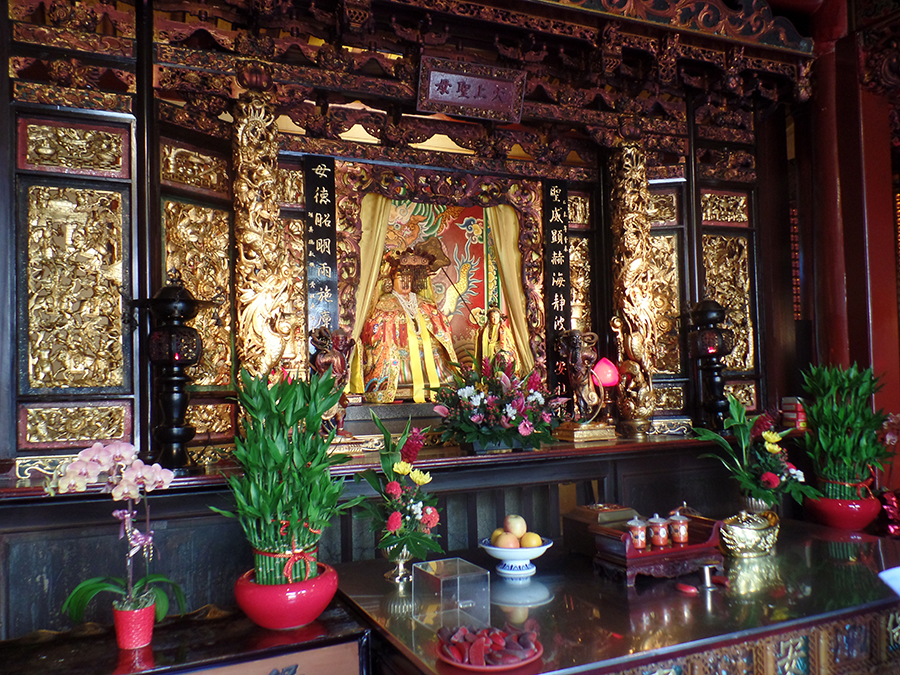
Daoist Shrine
During this visit we learned that Alan has spent four years in the US, mostly in California. He is a big basketball fan who decried the end of the eastern conference with LaBron going to LA. He was married only eight months before our visit and interestingly enough he went to Guam for his marriage ceremony. He also spend time explaining how one asks a Saint to grant a fortune and how he was spending much time with the saint of fertility hoping for a child. He professed no preference for a boy or girl.
From the temple we crossed the city to the Grand Hotel. We were a little surprised to have another hotel on the itinerary until he explained that the hotel was built by Chiang Kai-Shek as a place to entertain heads of state. It is of traditional Chinese Pagoda architecture and is the most distinctive structure in its district. The hotel took over 20 years to construct, has the best Feng Shui in all of Taipei and therefore is the luckiest place to stay on the island. Each floor is decorated from a different period in Chinese history. The most desired floor is the 8th as it is seen as the most favorable for your fortune.
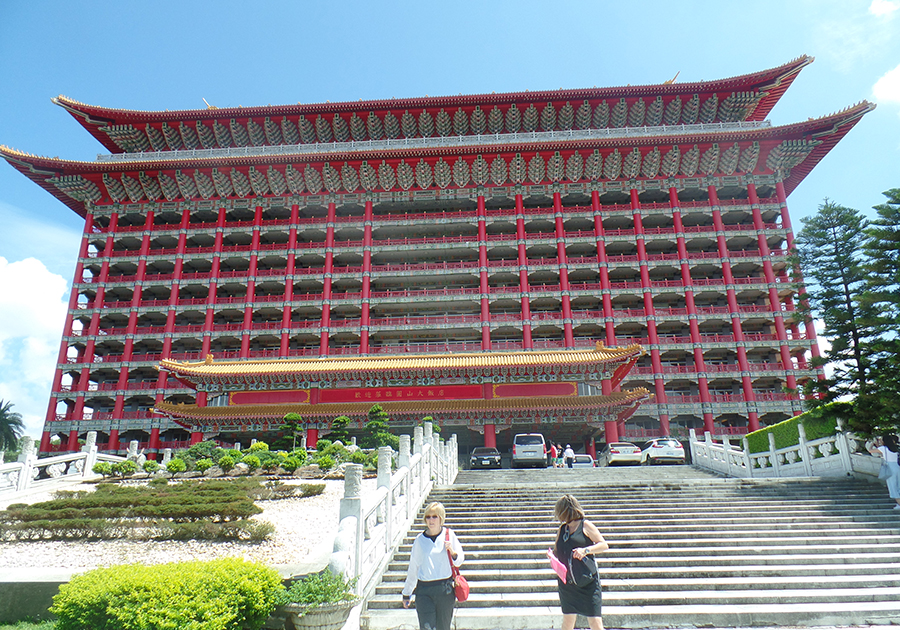
Grand Hotel in Taipei
After the Grand Hotel we stopped at a Starbucks for a Bubble Tea. If you’ve never had one, don’t ask. Then we went directly to the National Palace Museum No. 221, Section 2, Zhishan Road, Shilin District, Taipei City 11143, Taiwan, R.O.C. – http://www.npm.edu.tw. Alan knew the best place to park. We found a space very close to the main entrance, even though it seemed we were going a long way to get to it. The museum is one of the largest in the world with only the British Museum in London and the Louvre in Paris larger in terms of holdings. It is divided into three floors and a basement. We understood the museum only displays about ten percent of its holdings at any given time. On our visit the main exhibits were:
Basement: Children’s Gallery
Multimedia Auditorium
First Floor: Rare books and historical documents
Masterpieces of Precious Crafts: Ivory Balls of Nested Concentric Layers – Qing dynasty
Splendors of Qing Dynasty Furniture
Religious Sculptural Arts
Second Floor: Antiquities Special Exhibition: Flat Vase with West Asian Entertainers – Ming dynasty
Ceramic Collection
Painting and Calligraphy
Third Floor: Gathering of Treasures from Qing dynasty
The Bell and Cauldron Inscriptions
Antiquities Special Exhibition: Glass Red-overlay Vase – Qing dynasty
Masterpieces of Jade
Bronzes in the Museum Collection
Entrance fee was TW$350 per person and Alan encouraged us to go directly to room 302 as this is where we would get to see the most popular exhibit with the longest lines: the Jadeite Cabbage. The lines were not long in comparison, but those who were in line were not willing to move or let us get too close. Two young girls pushed in front of us and backed us up so they could see the cabbage, which is really a jade stone of about six inches in length carved to look like a cabbage. In the second case in this same room is another jade stone that looks like a slice of pork belly. We wondered why these two stones were so much of an attraction. I noted a sign that indicated they were carved at some point after the late 1600s. But still the interest mystified us. We toured the rest of the third floor, spend a few minutes in the Jade masterpieces display which included a jade inlaid screen that was simply magnificent, and then members of our group were ready to leave as it was just very crowded.
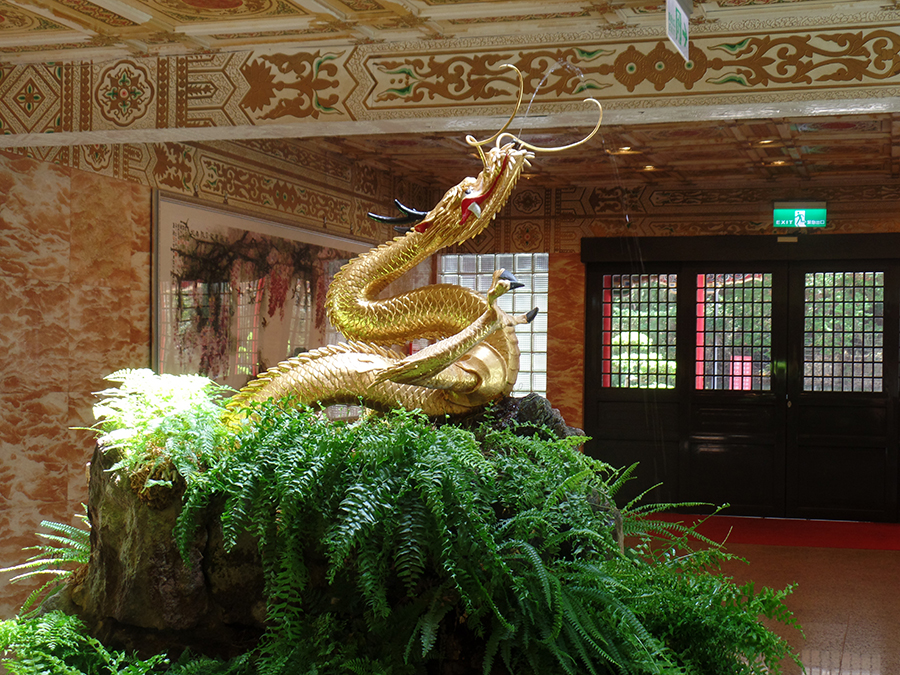
Dragon in Grand Hotel Showing Feng Shui
We found Alan in the lobby, who was surprised to see us after such a short time (about ten minutes). We asked what was so special about the Jadeite Cabbage and learned that it was brought from the Forbidden City in Beijing by Chiang Kai-Shek himself. This at least explained why the lines were so long and people intent on seeing the stone for themselves. Anyway, Alan suggested there may be a benefit in leaving the museum early in that we might be able to get in and out of lunch with a shorter wait by going then. And of course on the way to lunch it started raining. The rain stayed with us until the meal was over. Almost perfect timing.
We went to a dumpling shop across the street from the Chiang Kai-Shek Memorial Hall, but the line was 30 minutes and there was no place to park. We went around the block a couple of times, finally parked illegally while Alan checked out another shop around the corner and found we could get in with only a ten minute wait. We were informed that this was a place locals go, so everything was more authentic and much lower price. Again, Alan was right. We tried five different dishes including beef and pork dumplings, steamed broccoli, a green onion pancake, and a pork and shrimp dumpling that was pan fried on the bottom rather than steamed. We walked out with a lunch check of less than TW$1,200. (About $35 at the time of this visit). Alan had to leave us during lunch to move his car, but he helped us select and order, then came back when the meal arrived to help us eat it.
When lunch was over, Alan informed us that the lines at the CKS Memorial were still very long and we would be better going on to Taipei 101 which was the fourth tallest tower in the world when it was built but is now the eighth. It is 101 stories tall and has the fastest elevator in the world (30 seconds to the top from the 6th floor, 45 seconds down). It was actually more expensive to take the elevator up than visit the National Museum as each ticket was TW$600.
There was no sensation of speed on the way up and our ears didn’t seem to have to adjust so it was really an uneventful ride up and down. We took pictures of the city from above, two of us rode in a virtual reality simulator and toured the most extensive visitor shop I’ve seen anywhere in the world. Alan informed us that part of the reason the shop is so large is it is the safest place in the city. Taipei is subject to earth quakes and the foundation of the Taipei 101 building makes the top of the building the most earthquake resistant location in the city.
Alan took us out front of Taipei 101 where we found a group of individuals sitting in a circle wearing yellow shirts. They were protesting the Communist Chinese government policy supporting the harvesting of human organs from political prisoners. Alan informed us that in the last elections it was estimated that about 60% of Taiwanese favor remaining independent of China while approximately 40% believe the country should re-unite. That tension flowed over into the streets on the day we were at Taipei 101 as two groups of men were carrying signs, one protesting against China and one supporting the idea of reunification. They did not get violent, but the words exchanged were not pleasant greetings.
The final stop was a return to the Chiang Kai-Shek Memorial Hall. The site had been that of the Department of Defense, whose headquarters were removed after Chiang Kai-Shek’s death in 1974. Four structures were erected. One is a performance hall for visiting singers and pop groups. Across the wide white stone Liberty Square is the Concert/Playhouse where the symphony and various plays are performed. These building are of traditional Chinese temple type architecture and while not seeming large, Alan informed us the seating is underground and the capacity much larger than they look. At one end of Liberty Square is a white stone archway to greet one to the square and directly at the other is a white stone Pagoda-like stylistic memorial to Chiang Kai-Shek that is similar to the Lincoln Memorial in Washington, D.C. Above the statue of the Taiwan leader are his guiding principles: Ethics, Truth and Science. Alan informed us that every Taiwanese knows those principles and works to incorporate them into their daily lives.
Alan talked about how expensive Taipei has become with most apartments in the city starting at over US$1Million. He lives in New Taipei City, which is near the airport, almost an hour away. There a four bedroom apartment will start at about US$500,000. Consequently younger Taiwanese are finding it difficult to own a home in the old city and have moved to the new city. The real estate prices have been driven by wealthy Chinese who want to get their money out of the mainland, just as prices have in nearly every major city around the world.
During our stay we had the chance to eat a group dinner with an international team from across the world. The restaurant chosen was Dozo Izakaya Bar, No. 102, Guangfu South Road, Da’an District, Taipei City, 106. The restaurant is Japanese Fusion cuisine. It is similar to a Japanese steak house in that the tables are for six or eight and set lower than the floor. We were in a separate room on the second level that looks out over the diners on the first level. Low light levels, dark woods and floors. Our local host ordered the meal which was a continuous series of dishes that encompassed, noodles, fish and seafoods, meats including beef and pork, and rice. We accompanied this with an Italian Malvasia which seemed perfect for the dishes we sampled and a Chianti which was less so. Some of our group members preferred a Chilean Chardonnay, consumed the bottle, but did not remark upon its ability to compliment the dishes. Fifteen of us partook of this feast and yet when we could no longer hold our chopsticks there was still a considerable amount of different dishes beckoning us to continue. What was even more surprising was that this mountain of delights was reasonable and did not sober the convivial mood amongst the international team.
We had an opportunity to visit a night market in Taipei. One member of our group was born here and took us to the night market in the neighborhood where she grew up. What we learned is there are many night markets across the city. There is one very large one which is often very crowded. The neighborhood markets are more navigable. Having been to the Weekend Market in Bangkok, which is huge, selling anything you can imagine and difficult to visit all sections in a full day, we found the neighborhood market is essentially a single street of several blocks. Free standing shops on wheels are positioned in the center of the streets which are closed to vehicular traffic. However, an occasional motorcycle or bicycle found its way in. The other thing that found its way in this evening is the city authorities. We realized something was amiss when the merchants started moving their mobile stores into the alley nearest. Our host confirmed that not all the mobile shops have the necessary permits nor do they pay the required taxes. In looking around we realized that most of the shops were food stalls selling everything you can imagine for an Asian food lovers paradise. The one treat our friends had suggested we try is stinky tofu. I knew I was getting close before I saw the shop from the pungent odor. I admit I was unable to get past the smell and did not try it although several members of our group did and gave it a thumbs up. When we reached the end of the street we turned right and found we were in the pet store area as many puppies and kittens with sad eyes greeted us. If it weren’t such a long trip home I suspect there was more than one kitten that may have found a new home that evening.
On our last night we had an intriguing meal in a perfectly decorated little French bistro literally next door to the Shangri-La Far Eastern Plaza Hotel by the name of Le Bistro de L’Olivier, whose chef is Maggie Olivier. (Le Bistro de L’Olivier No. 122, Sec 2, An-He Road, Taipei City, and tel: 02-87223726). We had walked past this restaurant on the way to and from our hotel several times during our stay and but we were never there at the right time. Our schedules finally coincided on the last day of our visit. We ordered the Crab Bisque which was flavorful and had chunks of crab meat that were worthy of a bisque. This was followed by Prawns in a Saffron sauce. The prawns were cooked to perfection and the saffron sauce added a delicate nuance to the flavor. On the other hand, I had the Bouillabaisse which was primarily small bites of the thin tail sections of a variety of sea fish and shrimp. It also was cooked just the right length of time to make the ingredients blend together in a mélange of seafood flavors. This was accompanied by a Cabernet Sauvignon from South African producer Alto of the Stellenbosch. Cabernet Sauvignon? Are you kidding me? Seafood and a Cabernet? I need to turn in my wine snob credentials if I’m recommending a cab and seafood. But somehow it all worked. The Alto is the house wine. Since the service allowed us to consume most of the cab before the main course it actually worked quite well. The Alto Cab was very flavorful with bold cherry fruit forward delivery distinctive of South African terrior. We finished the evening with a perfect Grand Marnier Soufflé and found ourselves realizing this had been one of the best meals we’d had in our brief stay in Taipei City. I would recommend this venue to anyone who finds themselves in Taipei overnight.
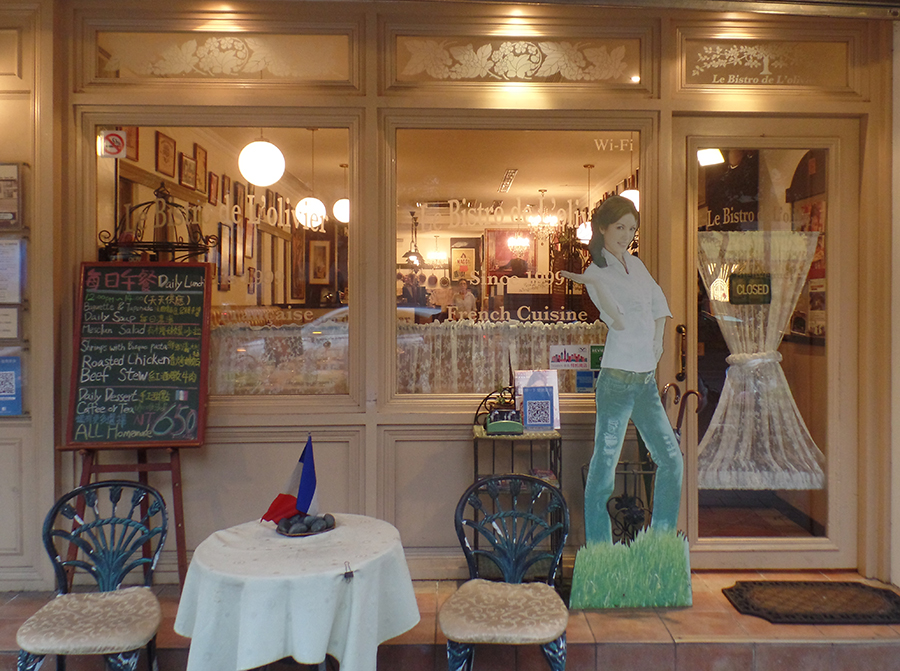
French Bistro de L’Olivier
I found Taipei not to be an architecturally interesting city apart from the few spectacular structures around Taipei 101, the various temples, the CKS Memorial and the Grand Hotel. But at the same time it is a surprising city in the rich culture, the varied food, and the earnestness of the friendly people you meet

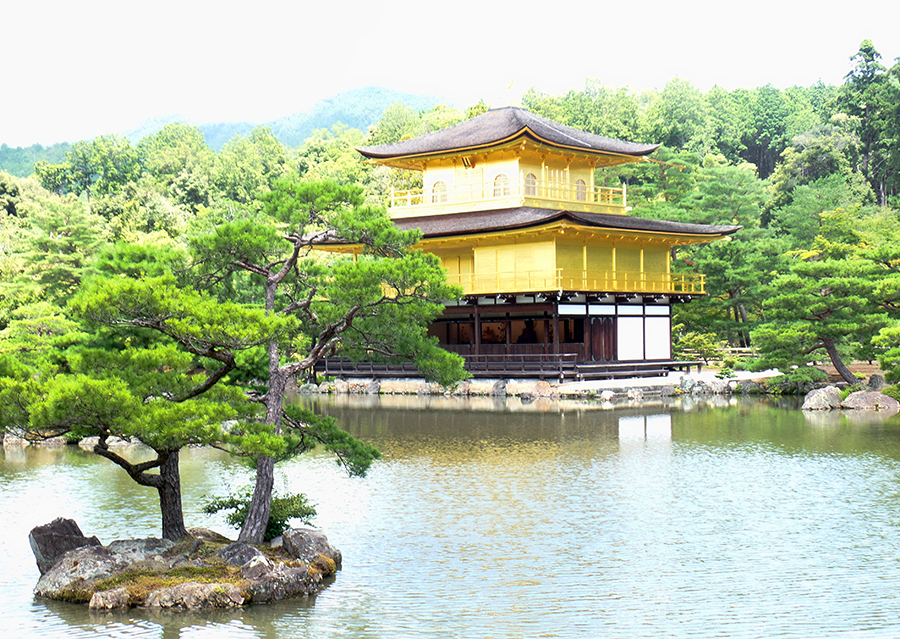
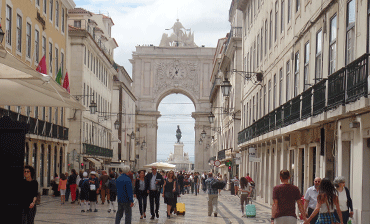
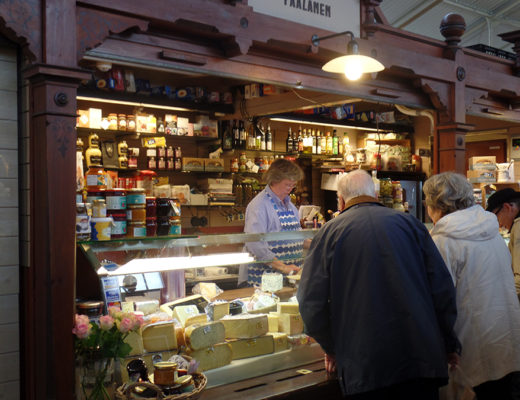

No Comments